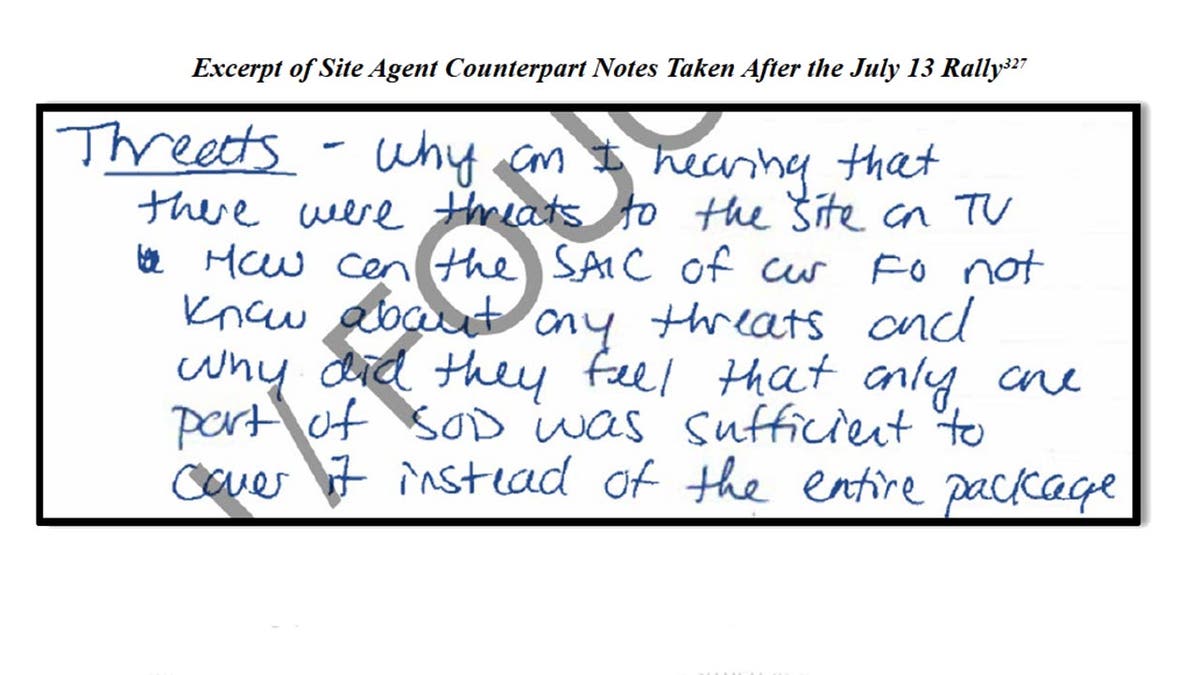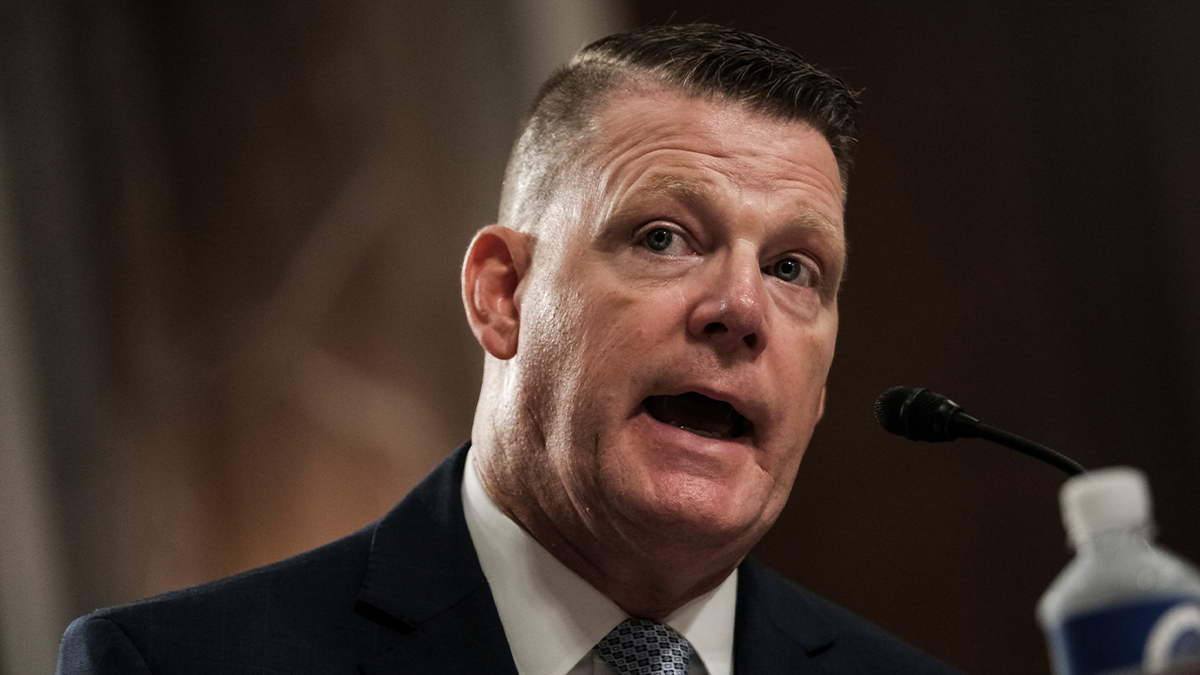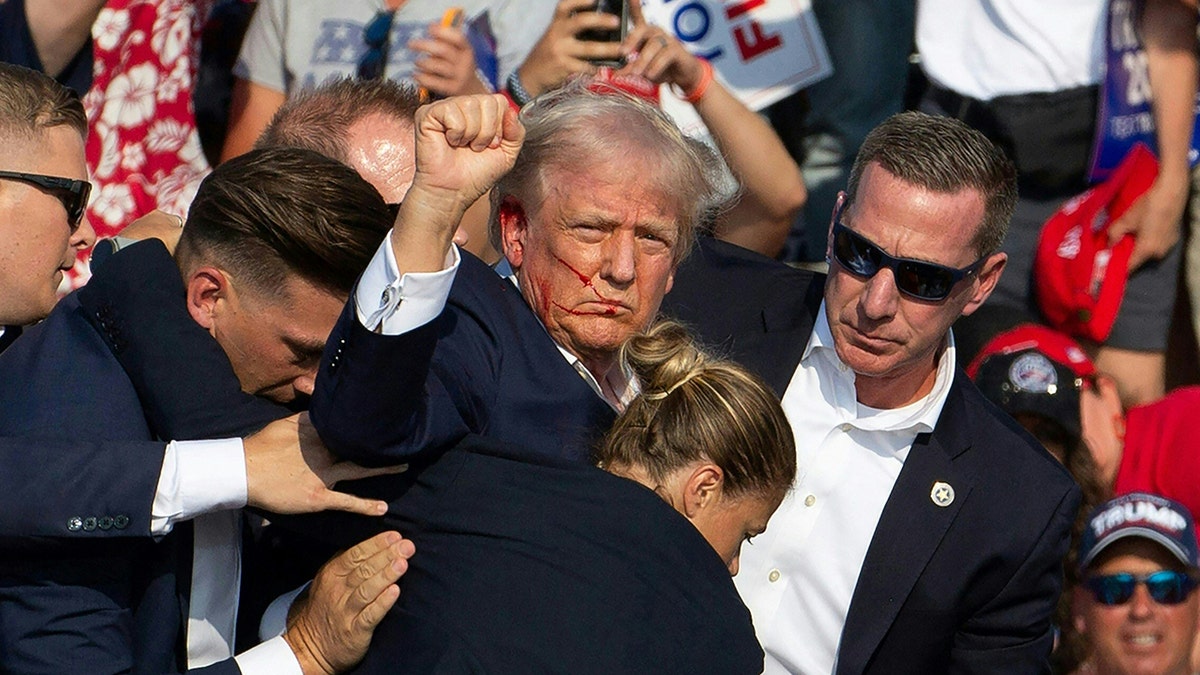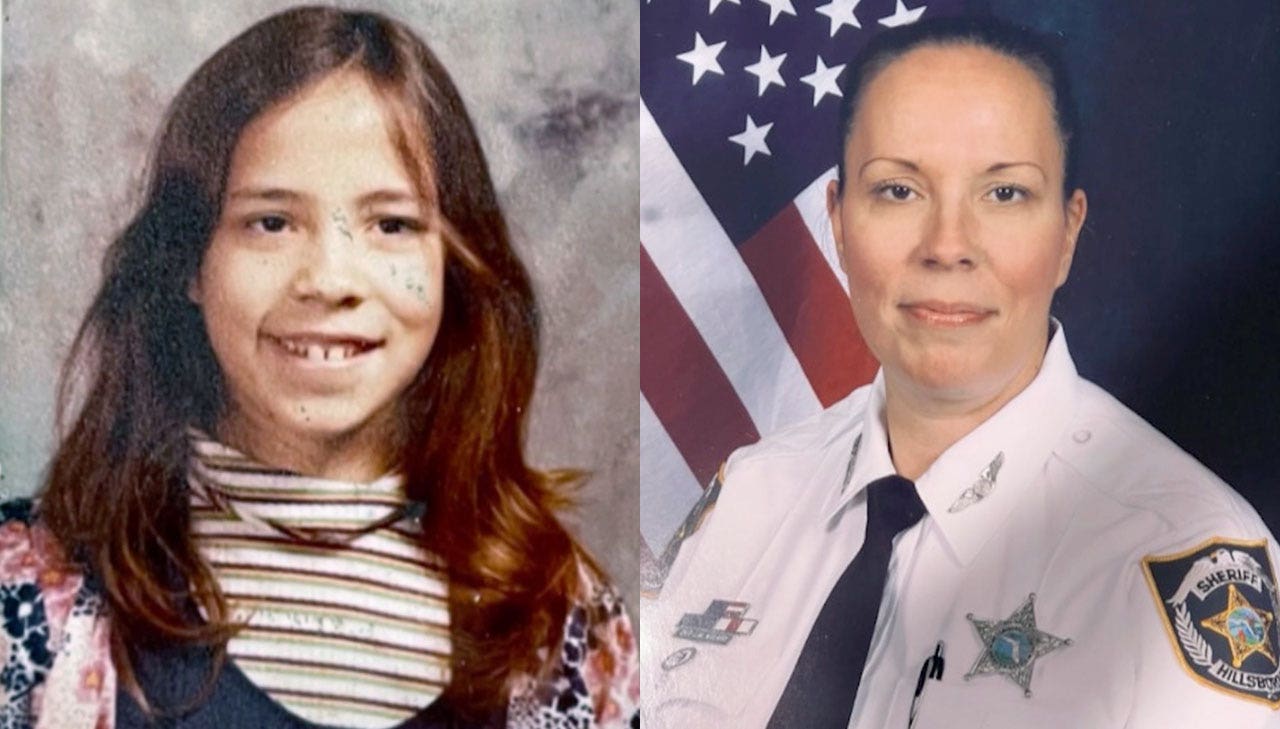FIRST ON FOX: Through public records, interview transcripts and a Senate panel investigating the July 13 security failure, Fox News Digital has learned that the U.S. Secret Service (USSS) knew former President Trump would be onstage at the open-air rally after the Federal Aviation Administration’s temporary flight restriction (TFR) expired.
An agent testified before the Senate Homeland Security and Governmental Affairs Committee that they warned a superior in advance but did not receive the requested security extension, citing previous instances when the former president remained at a rally after the restrictions expired.
The FAA typically issues TFRs for things like natural disasters, professional sporting events and presidential movements.
No aircraft, including civilian drones, are permitted to fly when a TFR is in place.
TRUMP ASSASSINATION ATTEMPT: THOMAS CROOKS SURVEYED GROUNDS, USED DRONE WITH LAW ENFORCEMENT IN POSITION

Former President Trump is surrounded by Secret Service agents after an attempted assassination during a campaign rally in Butler, Pa., on July 13, 2024. (AP Photo/Evan Vucci)
The Pennsylvania rally site does not sit in controlled airspace, according to public records requested and obtained by Fox News Digital. The lack of restrictions emphasizes a security justification for a presidential TFR, which would block mainstream consumer drones with GPS technology from even entering the airspace.
“Depending on the kind of drone, [some] are connected to that airspace database and may even prevent individuals from taking off,” James McDanolds, program chair for the School of Unmanned Technology at Sonoran Desert Institute, told Fox News Digital. “[A TFR is] primarily just so the airspace stays cleared and our security and safety is capped.”
The drone agent assigned to the rally on July 13 testified during the congressional hearing that the Secret Service typically gets a TFR over an area for the time that the protectee, such as a president or major presidential candidate, is present at the location.

Lawmakers are shown at the building where would-be assassin Thomas Crooks shot at former President Trump in Butler, Pa. (Fox News)
According to an Interim Joint Report released by the Senate Homeland Security and Governmental Affairs Committee investigating the Secret Service’s failures on July 13, a TFR was issued for the day of the rally from 4:20 p.m. to 6:15 p.m.
A Secret Service counter-drone agent spoke with another agent the day before the rally about additional TFR protection for the former president. They thought the TFR should remain in place longer, given that Trump’s rallies often run late.
“I’ve seen it expire at other events where [Trump] was speaking, and I would’ve preferred to have the TFR in place for the duration of the time,” the drone agent testified in their interview.
SECRET SERVICE, FBI RESPOND TO TRUMP RALLY VIDEO SHOWING FIGURE ON ROOF MINUTES BEFORE GUNFIRE

Former President Trump speaks at a rally in Uniondale, N.Y., on Sept. 18, 2024. (Julia Bonavita/Fox News Digital)
However, the agent’s request for the extension was denied without explanation, according to the report.
“The denial of the CUAS (counter-unmanned aerial systems) advance agent’s request to extend the TFR was internal to USSS and the C-UAS Advance Agent did not know why the request was denied,” according to a source close to the committee.
The counter-drone agent said the request was made in person to the assistant special agent in charge on July 12, the day before the rally.
“I would’ve liked for [the TFR] to start earlier and to last longer,” the drone agent testified.

A screenshot taken from the Homeland Security and Governmental Affairs Committee interim report into the Trump assassination attempt shows an excerpt of site counterpart notes taken after the July 13 rally. (Homeland Security and Governmental Affairs Committee)
However, the TFR extension was never put in place.
According to the transcript, the drone agent was unaware if the assistant special agent in charge possessed the ability to extend the TFR. Typically, a request will move through the Secret Service administration and then to the FAA for final approval.
“As standard procedure, the FAA does not deny TFR requests that come in from U.S. Secret Service,” an FAA spokesperson told Fox News Digital.
Trump took the stage about 6 p.m, an hour after he was initially scheduled to speak and 15 minutes before the TFR was set to end. While the Secret Service maintains that Trump was protected under a TFR at the time of the shooting, would-be assassin Thomas Crooks fired rushed shots at the former president five minutes before it expired. Crooks was killed by a counter sniper moments later. A bullet grazed Trump’s ear before Secret Service agents surrounded him and escorted him away. Crooks’ volley killed a member of the audience and wounded two others.

Thomas Crooks is seen at the Trump rally on July 13 in Butler, Pa. (Sen. Ron Johnson)
“It is always illegal to fly an unmanned aerial system inside U.S. Secret Service restricted grounds, and the U.S. Secret Service deploys a variety of seen and unseen measures at our protected sites,” the Secret Service said in a statement to Fox News Digital.
SECRET SERVICE TURNED DOWN LOCAL DRONE ‘REPEATEDLY’ AHEAD OF TRUMP JULY 13 RALLY: WHISTLEBLOWER
The drone agent also testified that the counter-drone equipment, which includes drone detection systems, experienced technical problems on the morning of the rally and remained inoperable until 4:33 p.m.
Crooks flew his drone for 11 minutes over the site of the rally at 3:51 p.m., just 30 minutes before the TFR was enacted, which may have blocked Crooks’ drone from taking flight. The report reveals that had the CUAS system been operational, it would have detected Crooks’ drone doing pre-rally surveillance.

Snipers are in position on a roof at former President Trump’s rally in Butler, Pa., on Oct. 5, 2024. (Matthew McDermott for Fox News Digital)
The drone agent told senators that if their counter-drone system was working at the time Crooks flew his drone, they would have requested a “consensual interview” with Crooks since the timing was outside the TFR window.
Acting Secret Service Director Ronald Rowe testified during the joint Homeland Security Committee and Judiciary Committee hearing on July 30 that the technical failures of the counter-drone systems had cost him “a lot of sleep because of the eventual outcome of the assailant.”

Acting U.S. Secret Service Director Ronald Rowe Jr. testifies at a joint committee hearing on Capitol Hill on July 30, 2024. (Michael A. McCoy for the Washington Post via Getty Images)
FBI Director Christopher Wray testified during a July 17 congressional hearing that Crooks had been present at the venue earlier in the day for approximately 70 minutes. Then–Secret Service Director Kimberly Cheatle resigned after testifying about the event before members of Congress, and multiple agents have been placed on administrative leave as the investigations continue.
The Secret Service also denied repeated offers from local law enforcement to provide drone coverage during the rally, according to a letter penned by Sen. Josh Hawley, R-Mo., to Homeland Security Secretary Alejandro Mayorkas.
“According to one whistleblower, the night before the rally, U.S. Secret Service repeatedly denied offers from a local law enforcement partner to utilize drone technology to secure the rally,” Hawley wrote.

Republican presidential candidate Donald Trump is seen with blood on his face and surrounded by Secret Service agents after an assassination attempt in Butler, Pa., on July 13, 2024. (Rebecca Droke/AFP via Getty Images)
“It is hard to understand why USSS would decline to use drones when they were offered, particularly given the fact USSS permitted the shooter to overfly the rally area with his own drone mere hours before [the] event,” he continued. “The failure to deploy drone technology is all the more concerning since, according to the whistleblower, the drones USSS was offered had the capability not only to identify active shooters but also to help neutralize them.”
Fox News Digital has learned that in light of the attempted assassination of Trump, the Secret Service is working alongside the FAA to grant further airspace protection for presidential candidates.
CLICK HERE TO GET THE FOX NEWS APP
“Following the events of July 13, the U.S. Secret Service worked with our partners at the FAA to expand the standard TFR protections for Presidential candidates in order to ensure the highest level of safety and security for all candidates,” the Secret Service said in a statement.
“As part of Acting Director Ron Rowe’s plan for an agency-wide paradigm shift, the U.S. Secret Service also stood up a research and development office dedicated to studying emerging technologies, including those related to the use of (unmanned aerial systems) and counter-UAS measures, to ensure we have access to the most advanced technology possible to help keep our protectees safe.”






